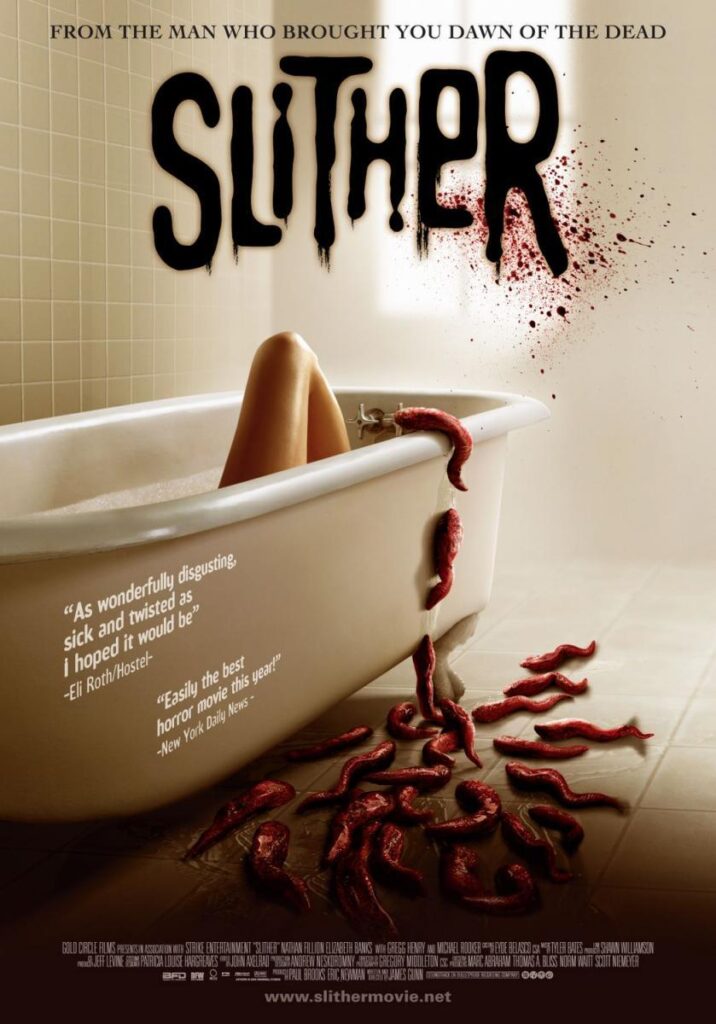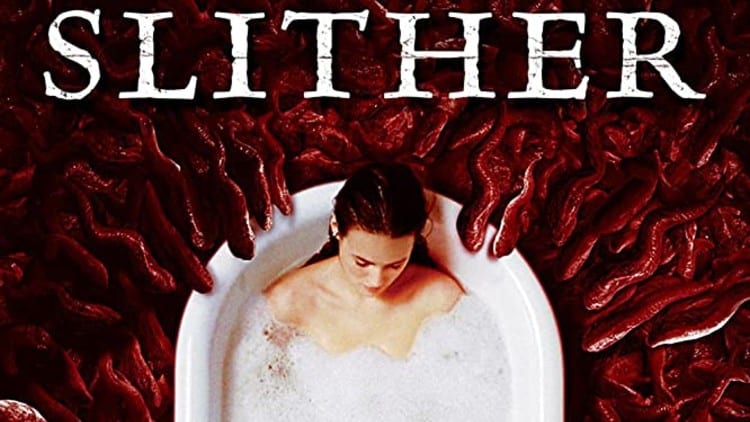“Slither” (2006): A Gooey, Gory Love Letter to Creature Features

If you’re a fan of slimy monsters, over-the-top gore, and a healthy dose of twisted humor, James Gunn’s Slither (2006) is a film that deserves a spot on your cult horror watchlist. Released at a time when horror was skewing heavily toward torture porn and psychological thrillers, Slither felt like a nostalgic slap in the face—in the best possible way.
A Throwback with Teeth
Set in the small town of Wheelsy, South Carolina, Slither begins with the crash of a meteorite carrying an alien parasite that infects local man Grant Grant (played by Michael Rooker). From there, things spiral into grotesque madness. Grant slowly mutates into a squelchy, tentacled monstrosity, spawning a horde of slug-like creatures that crawl into people’s mouths and turn them into zombie-like hosts.
Sound familiar? That’s no accident. Slither wears its influences proudly on its ooze-covered sleeve. It’s a loving homage to the likes of Night of the Creeps, The Thing, and even Invasion of the Body Snatchers. Gunn, in his directorial debut, brings his Troma-honed instincts to bear, combining practical effects, black comedy, and genuine affection for B-movie horror.
The Cast Brings It
Elizabeth Banks stars as Starla, Grant’s bewildered wife, while Nathan Fillion delivers a standout performance as the wisecracking Sheriff Bill Pardy. Their chemistry brings surprising warmth to a film that otherwise revels in blood, bile, and body horror. Gregg Henry’s performance as foul-mouthed Mayor MacReady (yes, another genre nod) is a scene-stealer, injecting much-needed levity even as the body count rises.
Why It Still Works
What makes Slither endure nearly two decades later isn’t just the impressive practical effects or the horror references—it’s the tone. Gunn strikes a careful balance between horror and comedy without undercutting either. The characters, while exaggerated, feel grounded enough that their fates matter, and the laughs never diminish the scares.
Also, Slither was ahead of its time in showing how horror can still be fun, absurd, and heartfelt all at once—a sensibility Gunn would later bring to mainstream success with Guardians of the Galaxy.
Final Thoughts
Though Slither underperformed at the box office, it has since found its audience in horror circles and stands as a gem of mid-2000s genre filmmaking. It’s not for the squeamish, but if you can handle exploding bodies, parasitic slugs, and grotesque transformations, you’re in for a wildly entertaining ride.
Whether you’re discovering it for the first time or revisiting it with fond memories, Slither is a gloriously gooey reminder that horror doesn’t always have to be serious to be seriously good.



